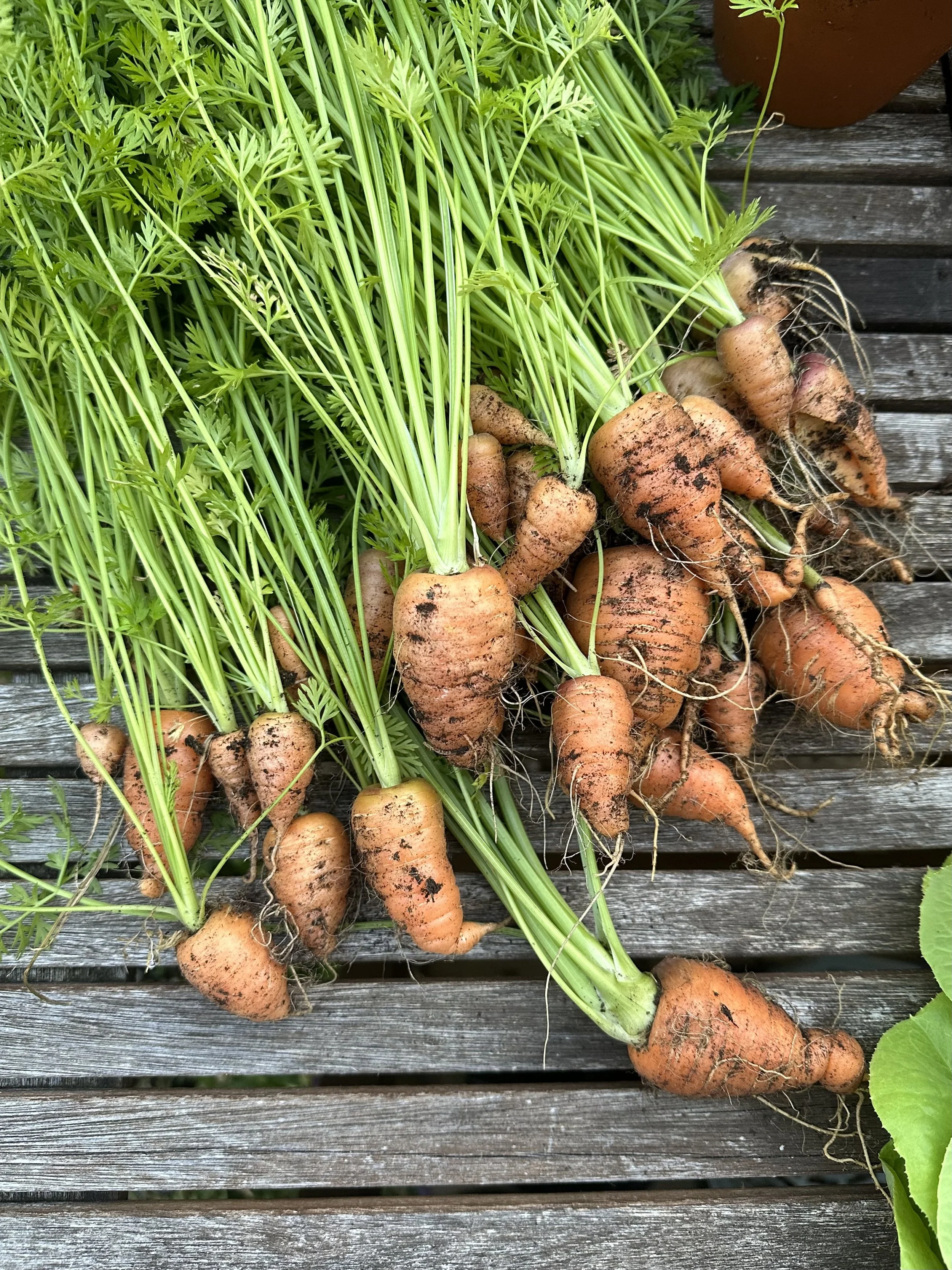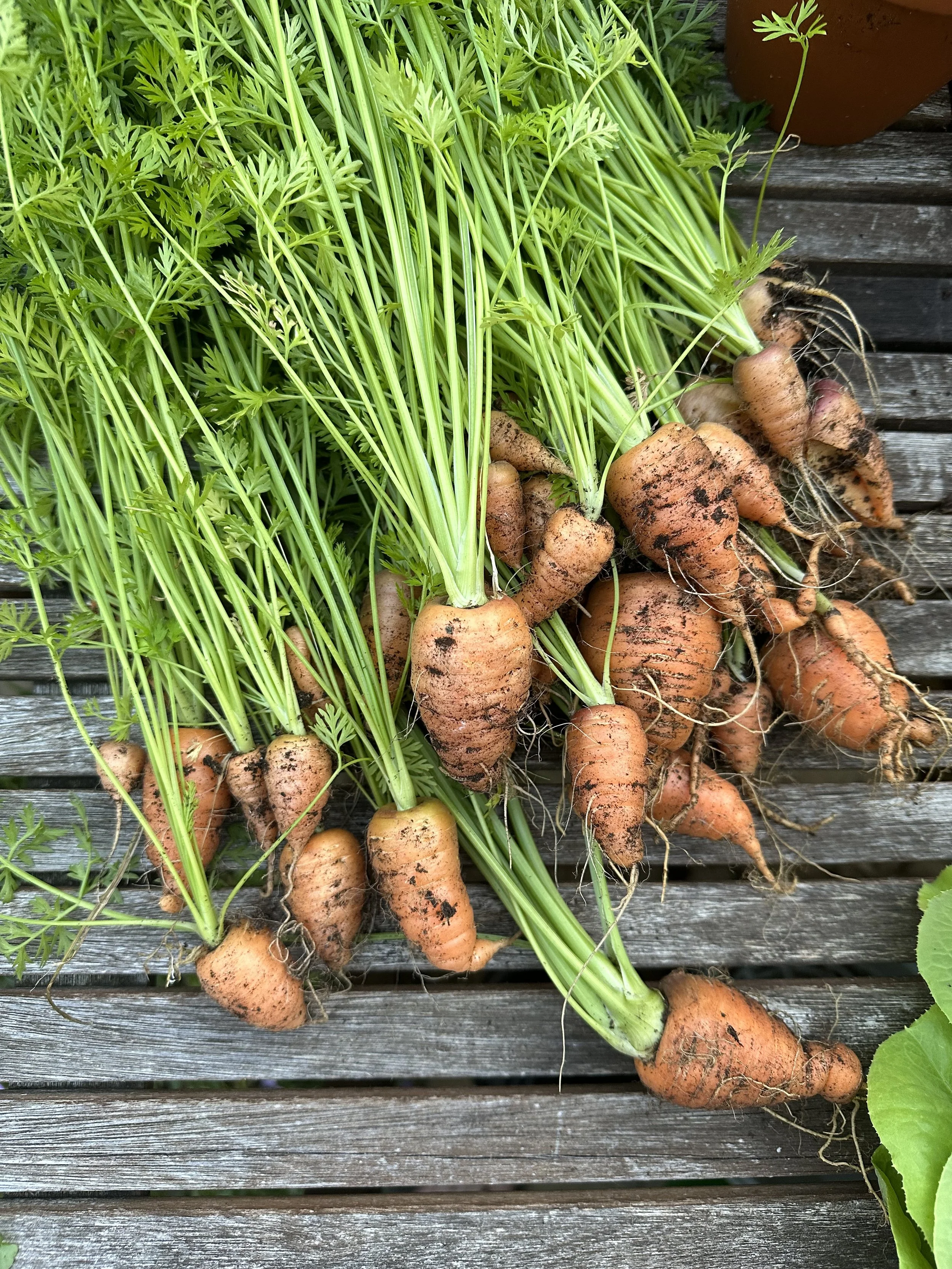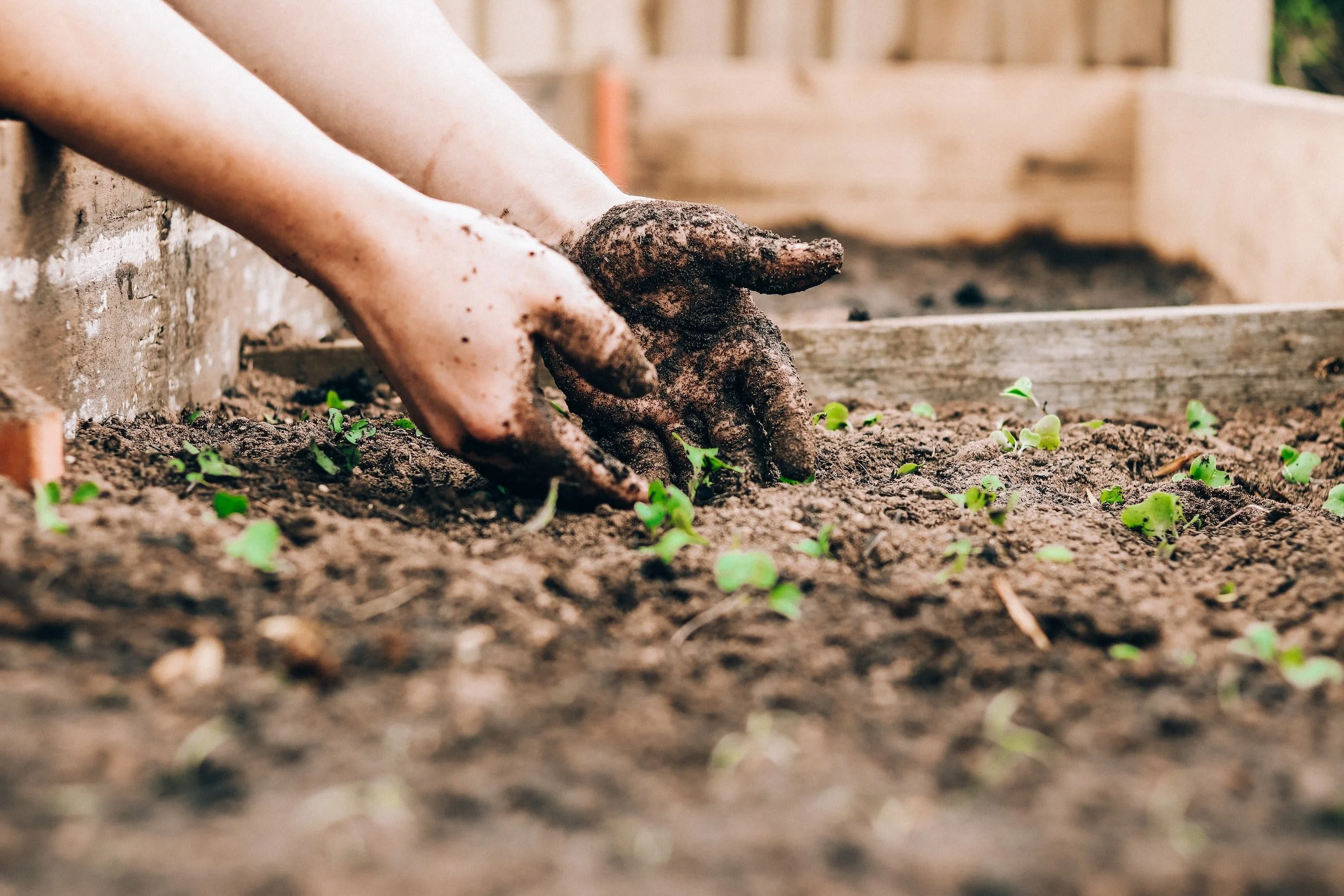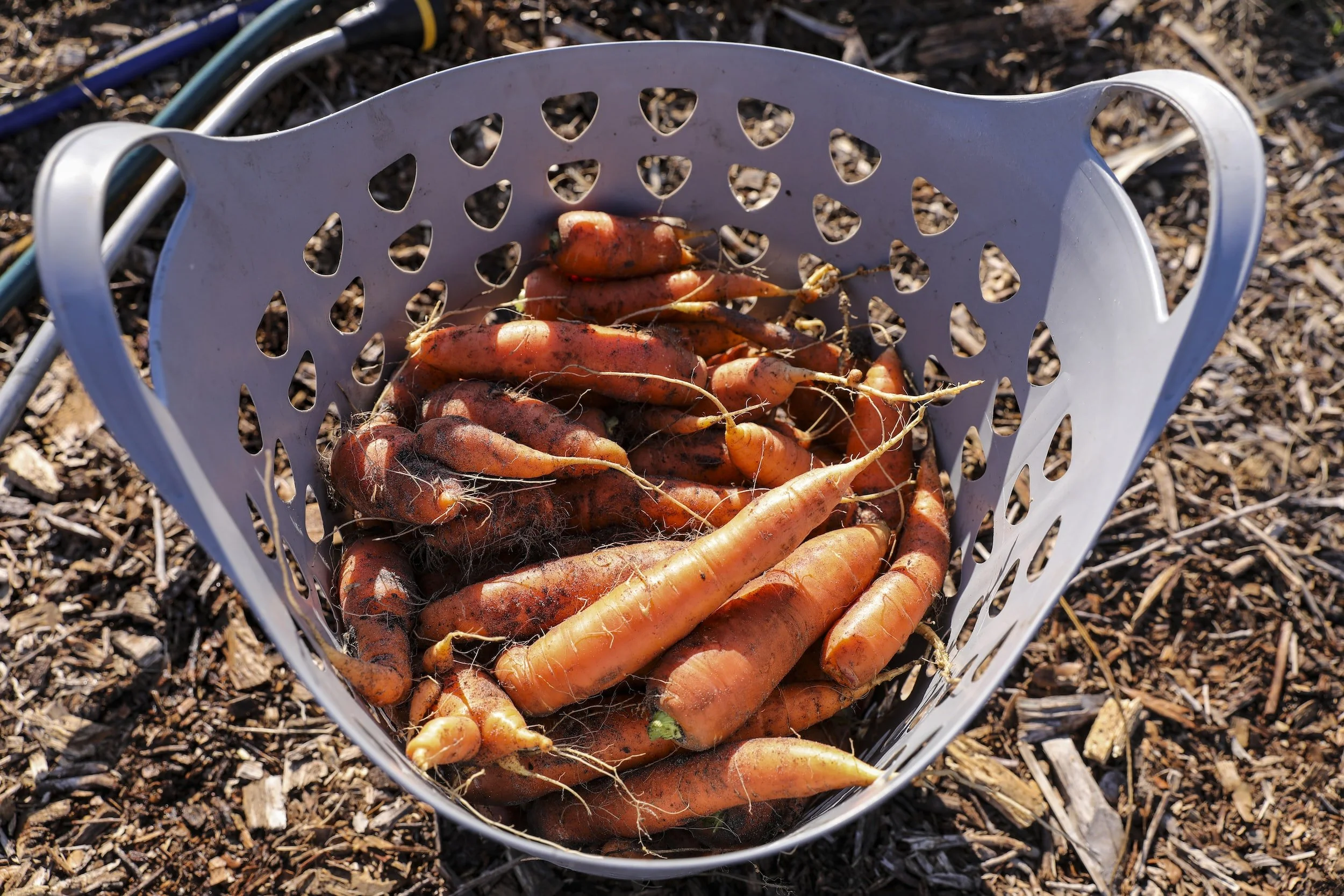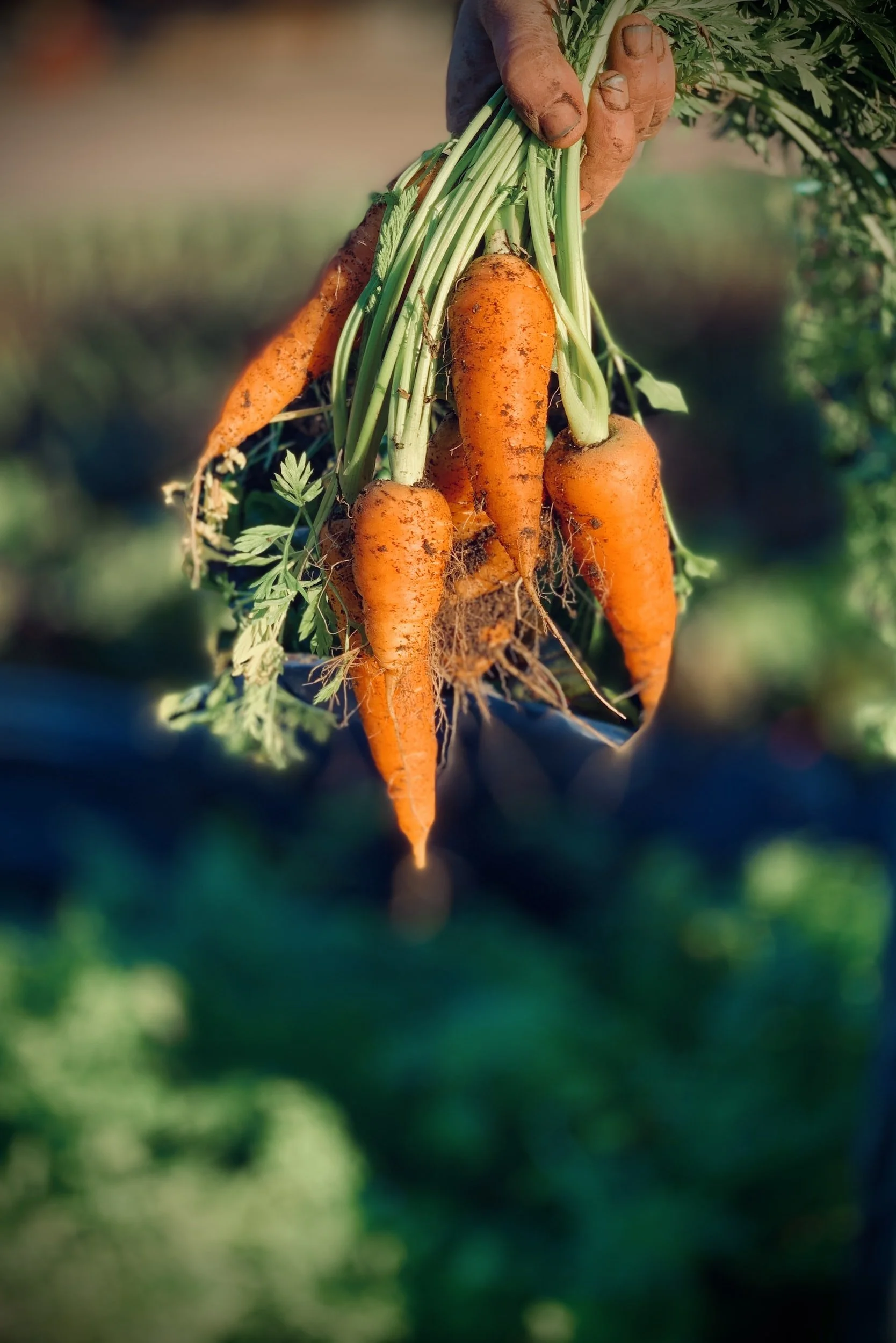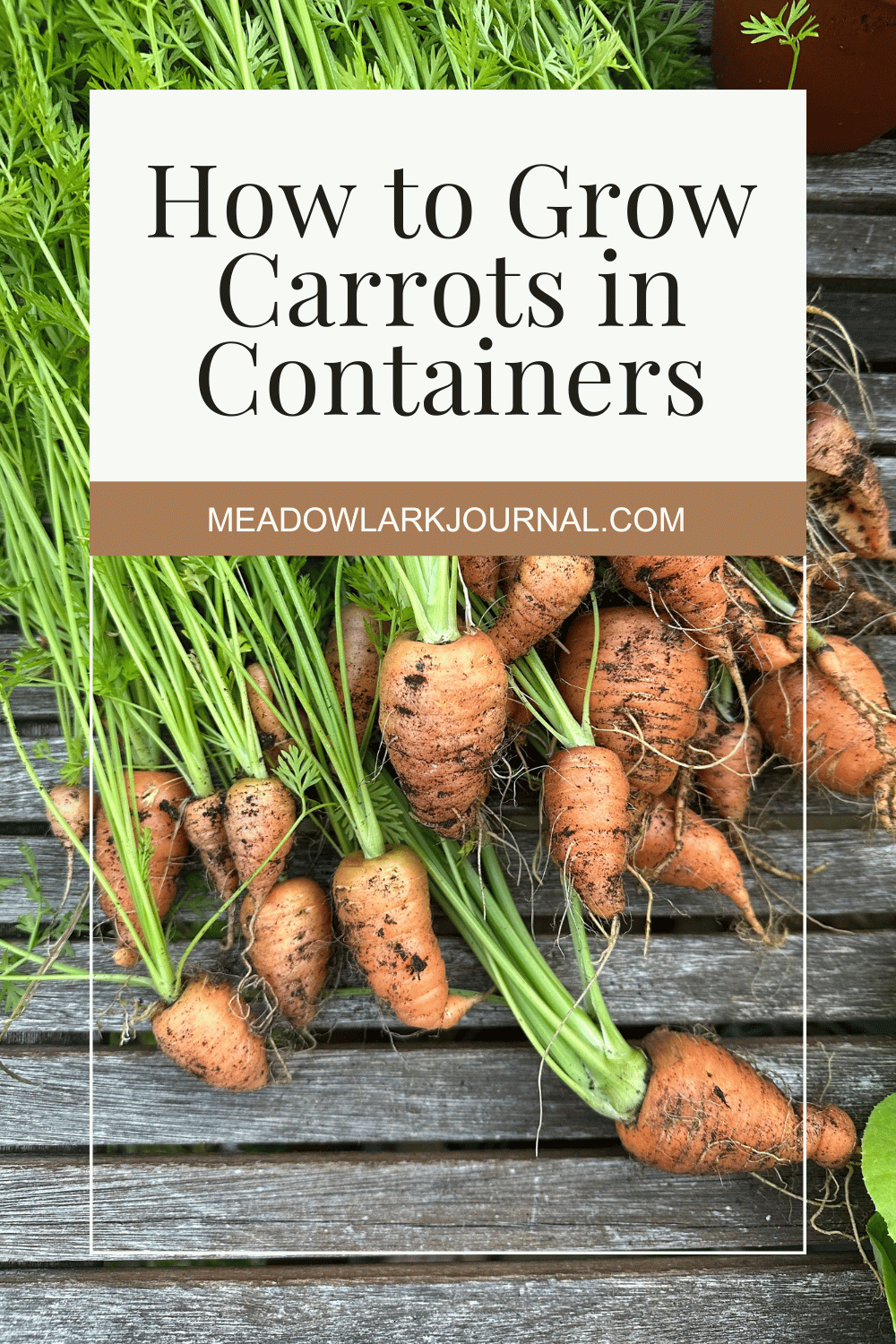Growing Carrots in Containers: The Ultimate Guide
This website is reader-supported - thank you! This post may contain affiliate links. As an Amazon Associate, I earn from qualifying purchases at no extra cost to you.
Carrots are a staple of many gardens, but what do you do if you don't have a lot of outdoor space?
Fortunately, growing carrots in containers is an easy and practical solution if you are short on space or don't have access to a traditional garden plot.
Container gardening allows you to grow carrots in a variety of locations, including balconies, patios, and even indoors.
Not only does container gardening save space, but it also allows you to control the growing environment and avoid pests and diseases.
In this guide, I'll take you through the process of growing carrots in containers, from selecting the right container to planting and caring for your crop.
To learn more about growing carrots, check out my guides:
I love growing carrots in pots. Here is my recent harvest of container-grown carrots.
Can Carrots Grow in Containers?
Yes, carrots can grow in containers!
In fact, container vegetable gardening is a great way to grow carrots if you don't have a lot of space or if you want to grow them indoors.
When growing carrots in containers, make sure to choose a container that is at least 12 inches deep and has drainage holes to allow for proper root growth and drainage.
You'll also need to prepare loose, well-draining soil and sow your carrot seeds at the proper depth and spacing.
With the right container, soil, and care, you can grow delicious home grown carrots in containers.
Looking for more container gardening inspiration?
Check out my guides:
Choosing the Right Carrot Varieties
When choosing the right carrot varieties for containers, there are several factors to consider.
By choosing the right carrot varieties for your containers, you can ensure that your plants have the best chance of success and produce a harvest of delicious, homegrown carrots.
Here is how to choose the best varieties:
Size
Look for smaller varieties of carrots, such as "baby carrots" or "miniature" carrots, as they are easier to grow in containers and require less space to mature.
Shape
Choose varieties that are straight or cylindrical in shape, rather than rounded or tapered, as they will be easier to grow in containers and will have fewer issues with root growth.
Root depth
Look for carrot varieties that have a shallow root system, as they will be able to grow well in the limited space of a container.
Avoid varieties with long roots or those that are known to fork, as they may struggle to grow in containers.
Days to maturity
Check the days to maturity on the seed packet or plant tag, and choose varieties that mature in less time.
This will help ensure that your carrots have enough time to grow and mature before the growing season ends.
Disease resistance
Look for carrot varieties that are disease-resistant, as this will help prevent problems like root rot or fungal diseases.
Here are my recommended carrot varieties for growing in containers:
Thumbelina Carrots:
One of the most popular varieties since it is small and round, making it perfect for container growing.
Little Finger Carrots:
Excellent choice, as it produces small, slender roots that are perfect for snacking.
Round Parisian Carrots:
Has a cylindrical shape and can be grown closely together in containers.
Grow even more veg in containers with my guides:
Choosing the Right Container for Your Carrots
The first step to growing carrots in containers is to choose the right container.
The container will need to be at least 12 inches deep and have drainage holes.
This will allow for proper root growth.
You can use a variety of containers for growing carrots, including pots or buckets.
Just be sure to choose a container that is large enough to accommodate the size of the carrots you want to grow.
Here are my recommended containers for growing carrots if you are short on space:
And here are is my recommended container for growing carrots if you have a little more space:
For more easy-to-grow veg in containers, check out my guides:
When to Grow Carrots in Pots
Carrots prefer cooler temperatures and can tolerate some frost, but they also need at least 6 hours of direct sunlight per day.
If you're growing carrots in a colder climate with a short growing season, it's best to sow your carrot seeds outdoors in the spring, as soon as the soil can be worked and after the last frost date has passed.
You can also sow carrot seeds in the fall, about 10-12 weeks before the first expected frost date.
If you're growing carrots indoors or in a climate-controlled environment, you can sow carrot seeds at any time of year.
Just make sure to provide enough light and maintain a consistent temperature for optimal growth.
In general, it's best to sow carrot seeds in the cooler months of spring and fall, as carrots prefer cooler temperatures and will struggle to grow in hot summer temperatures.
With proper care and attention to timing, you can enjoy a bountiful harvest of homegrown carrots from your pots.
Looking for more container gardening inspiration?
Check out my guides:
Growing Pumpkins in Containers: A Complete Urban Garden Guide
Carrots are super easy to grow in containers.
Preparing Your Potting Soil
Preparing your soil is a crucial step in growing carrots in containers.
Carrots need loose, well-draining potting soil that is free of rocks and debris to allow their roots to grow deep and straight.
Here is how to prepare your soil:
Choose a high-quality compost mix
A good compost mix will provide the right balance of moisture retention, aeration, and nutrients for your carrots.
Look for a compost mix that is specifically formulated for vegetables.
Here is the compost I recommend for growing carrots in containers:
Amend your soil
If your compost mix doesn't already contain organic matter like well-rotted manure, you can add some to improve soil fertility and texture.
Mix in a handful of well-rotted manure per container.
Or you could add a simple compost tea to enrich the soil.
Check out my guide A Simple Recipe for Rich Compost Tea.
Adjust pH
Carrots prefer a soil pH of 6.0 to 6.8.
Use a soil test kit to check your soil's pH, and if it's too low, add lime to raise it. If it's too high, add sulfur to lower it.
Here is the soil test kit I use:
Mix thoroughly
Once you have all your ingredients, mix them together thoroughly until everything is evenly distributed.
This will ensure that your carrots receive all the nutrients they need.
Fill your containers
Fill your containers with the prepared soil, leaving about an inch of space at the top.
Water the soil well before sowing your carrot seeds.
By preparing your soil properly, you'll provide your carrots with the best growing conditions and set them up for success.
Check out my guide:
Planting Carrots
Planting your carrot seeds properly is essential for ensuring healthy and abundant carrot growth.
Here are the steps to follow:
Plant carrot seeds:
Sow your carrot seeds directly into the prepared soil, either by sprinkling them over the surface or by making shallow furrows with a hoe or trowel.
Plant carrot seeeds about 1/4 inch deep and space them about 2 inches apart.
Make sure to follow the spacing recommendations on your seed packet in order to plant carrots correctly for the variety you have chosen.
Cover your seeds
Cover your seeds with a light layer of soil or vermiculite, and water the soil gently to settle the seeds in.
For more watering tips, check out my guide How Often to Water Seedlings.
Thin your seedlings
Once your carrot seedlings are about 2 inches tall, thin them so that they are spaced about 1-2 inches apart.
This will give each carrot enough room to grow to its full size.
Be gentle when thinning to avoid disturbing the roots of the remaining plants.
For more inspiration, check out my guides:
Caring for Your Carrots
Here is how to care for carrots in pots:
Watering
Carrots need consistent moisture to grow properly.
Water your containers deeply once or twice a week, or more often if the soil feels dry to the touch.
Make sure to water slowly and thoroughly to avoid washing away the soil or causing soil erosion.
Fertilizing
Carrots don't need a lot of fertilizer to grow, but you can use a slow-release organic fertilizer once or twice during the growing season if you want to give them an extra boost.
Avoid using high-nitrogen fertilizers, as they can cause the carrots to fork or split.
Here is my recommended slow-release fertilizer:
Pest and disease control
Keep an eye out for pests like aphids or carrot rust flies, which can damage your plants.
Use organic methods to control pests, such as spraying with neem oil or introducing beneficial insects like ladybugs.
Here is the neem oil I recommend using:
Grow even more in containers with my guides:
Growing Corn in Containers Made Easy
Harvesting Your Carrots
After about 70-80 days, your carrots should be ready to harvest.
You can tell when they're ready by gently pulling on the tops of the plants.
If the roots come out easily, they're ready to be harvested.
To learn more about when to pick carrots check out my guide: When to Pick Carrots: The Comprehensive Guide.
Here are some tips for harvesting carrots grown in containers:
Check maturity
Carrots usually take between 70-80 days to mature, depending on the variety.
You can check their maturity by gently pulling the top of the carrot to see if it has reached the desired size and color.
Harvest when maturE
When your carrots have reached their full size and color, it's time to harvest.
Hold the top of the carrot and gently wiggle it free from the soil.
Avoid pulling on the stem, as this can damage the carrot.
Be gentle
Be careful when harvesting carrots, as they can be fragile and easily damaged.
Avoid pulling or twisting the carrots too hard, as this can cause them to break or split.
Store properly
After harvesting, remove the greens (these are edible and can be added to salads) and wash the carrots gently to remove any dirt.
Store them in a cool, dry place, such as a refrigerator, to keep them fresh.
Carrots can last for several weeks if stored properly.
For more planting tips, check out my guide:
Wrap-Up
In conclusion, growing carrots in containers can be a really rewarding way to enjoy fresh, homegrown vegetables even if you have limited space or access to a garden.
With the right soil, container, and carrot variety, you can easily grow carrots in pots on your balcony, patio, or even indoors.
Remember to sow your carrot seeds at the right time, keep the soil moist but not waterlogged, and provide plenty of sunlight and air circulation.
With a little care and attention, you can grow your own delicious, healthy carrots at home.
Pin this post to save it for later!
